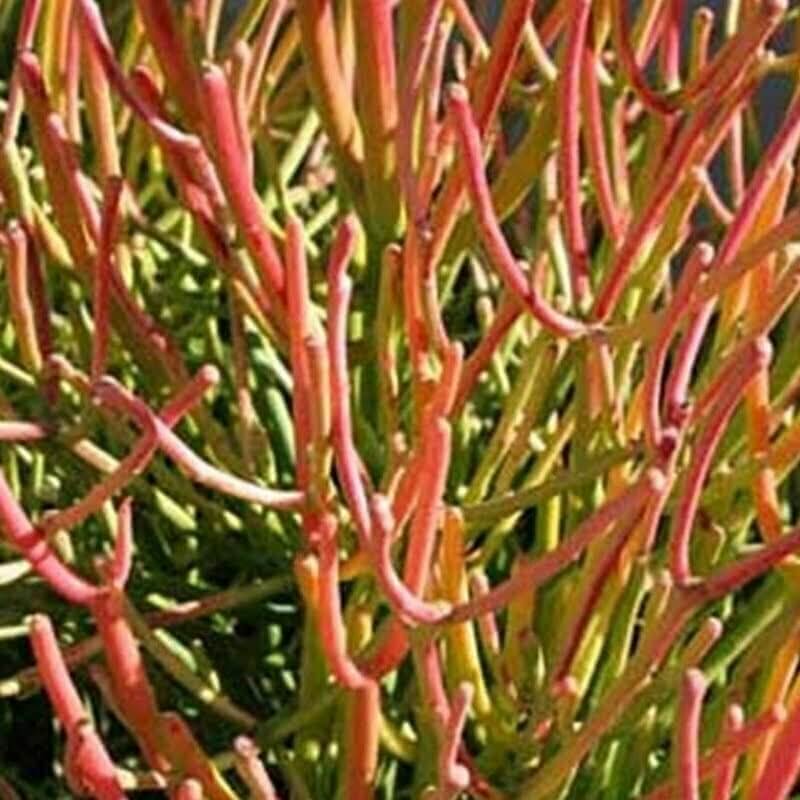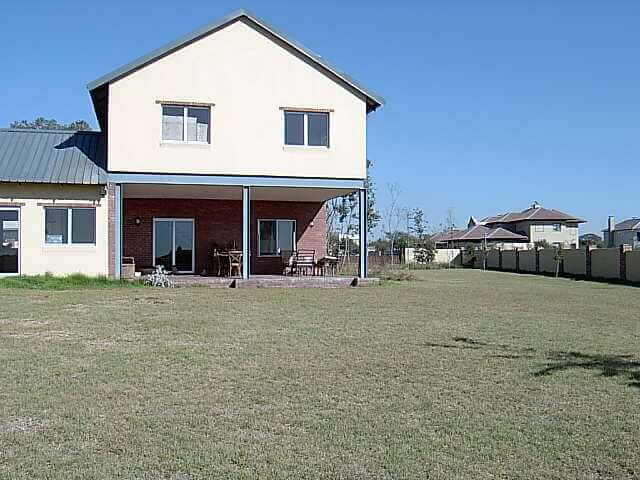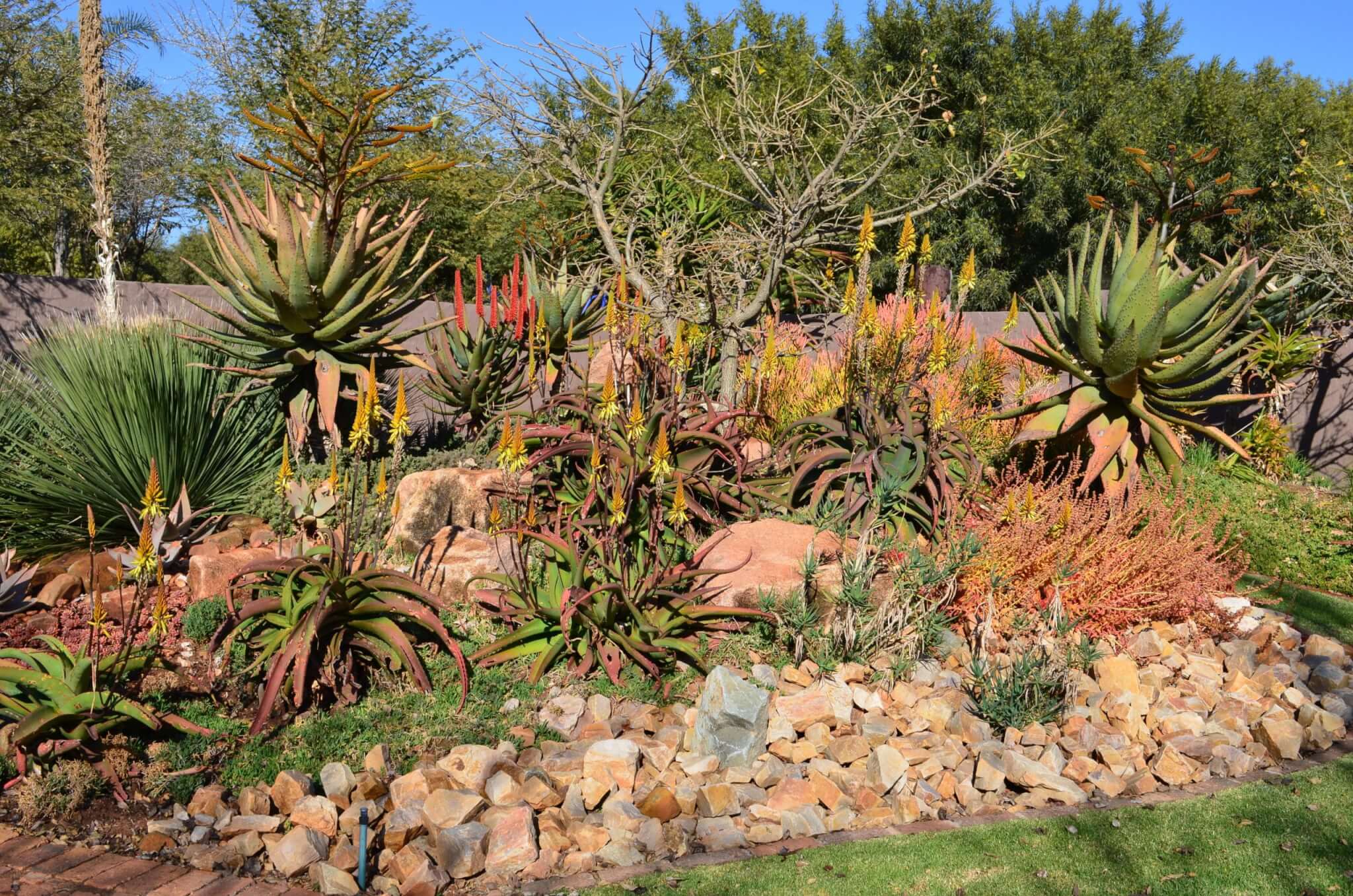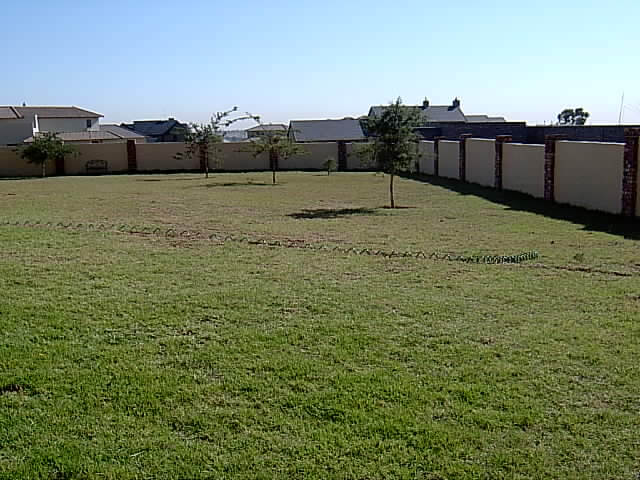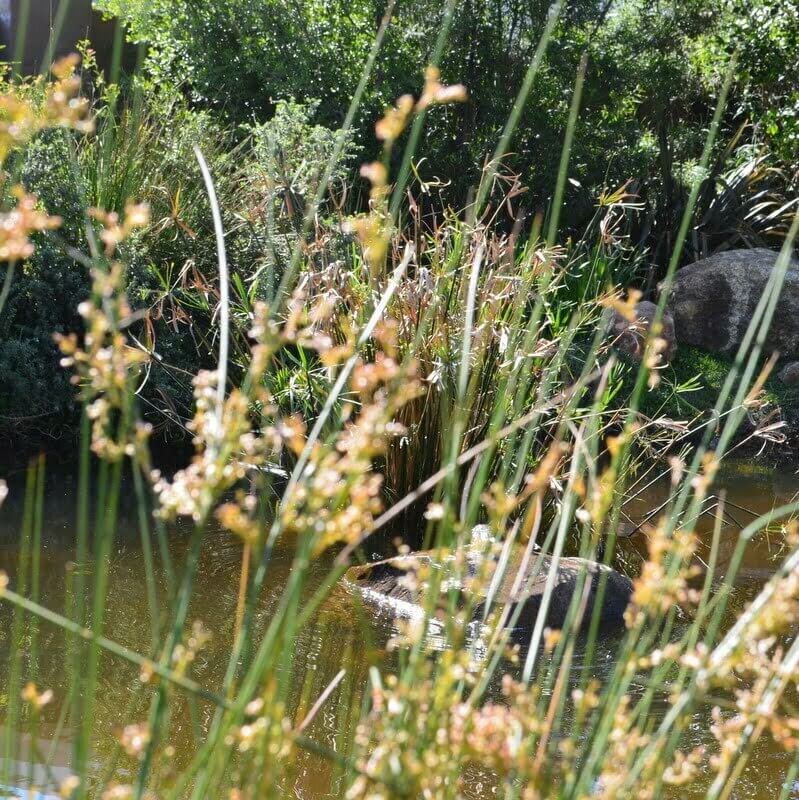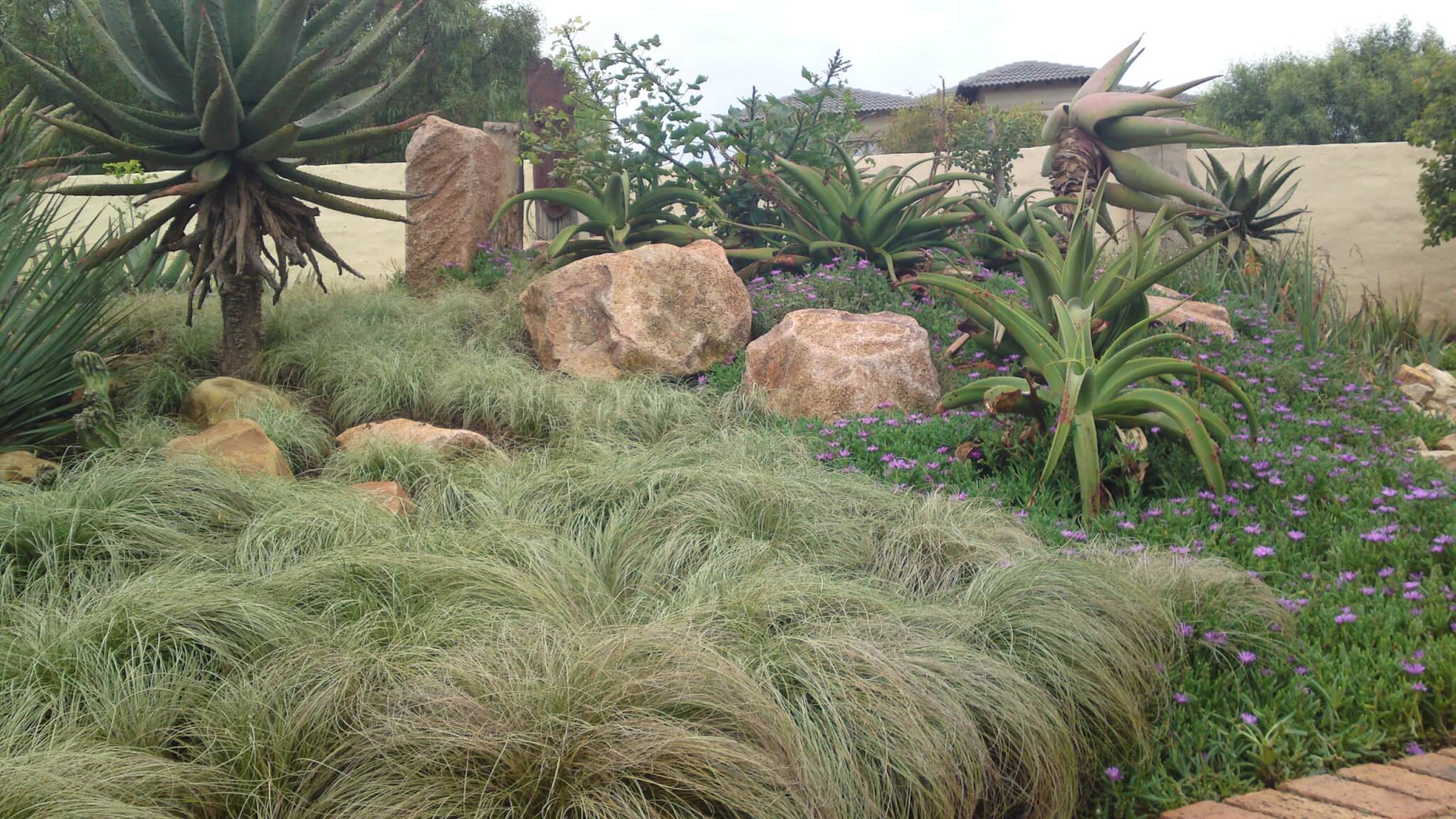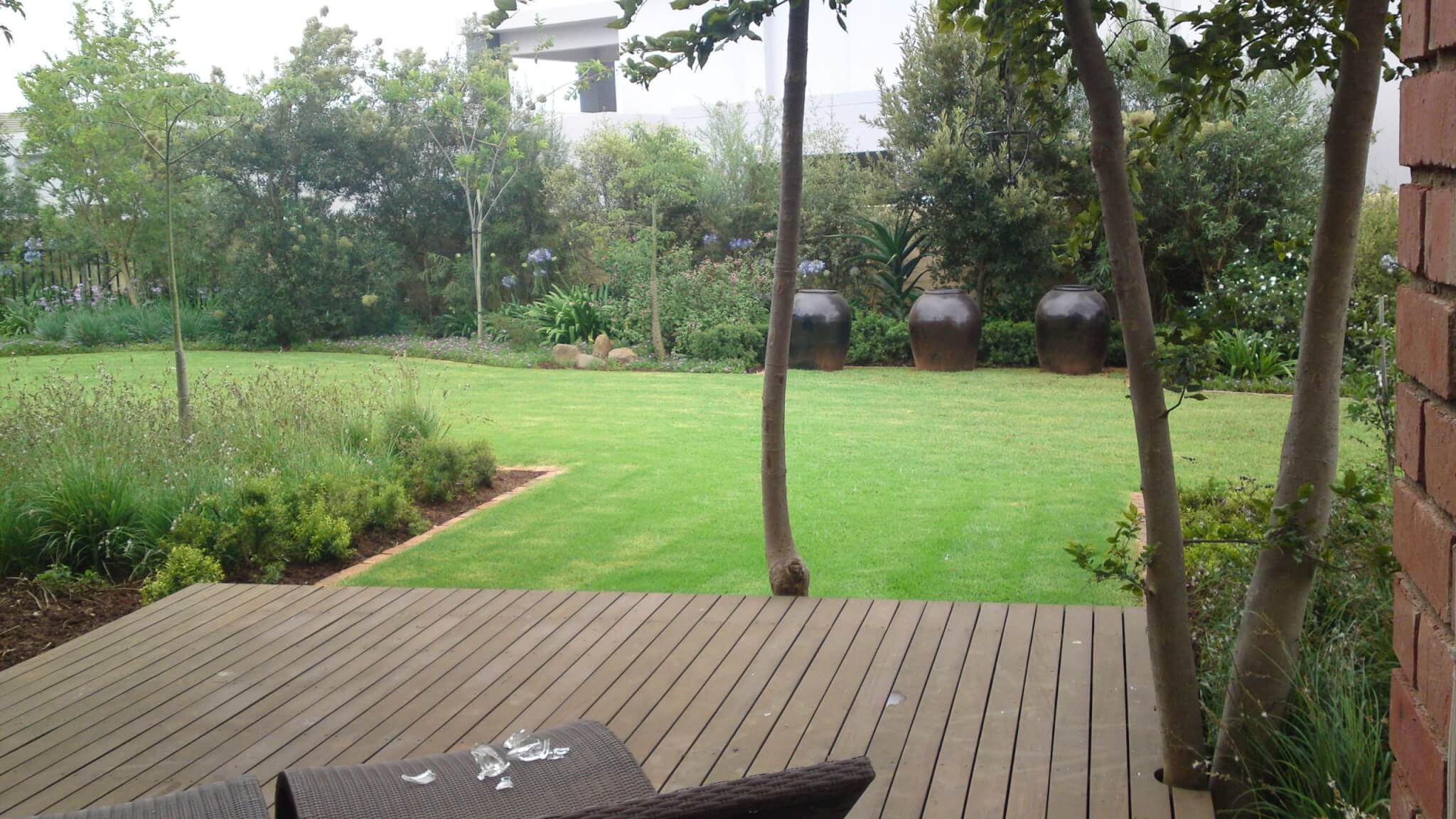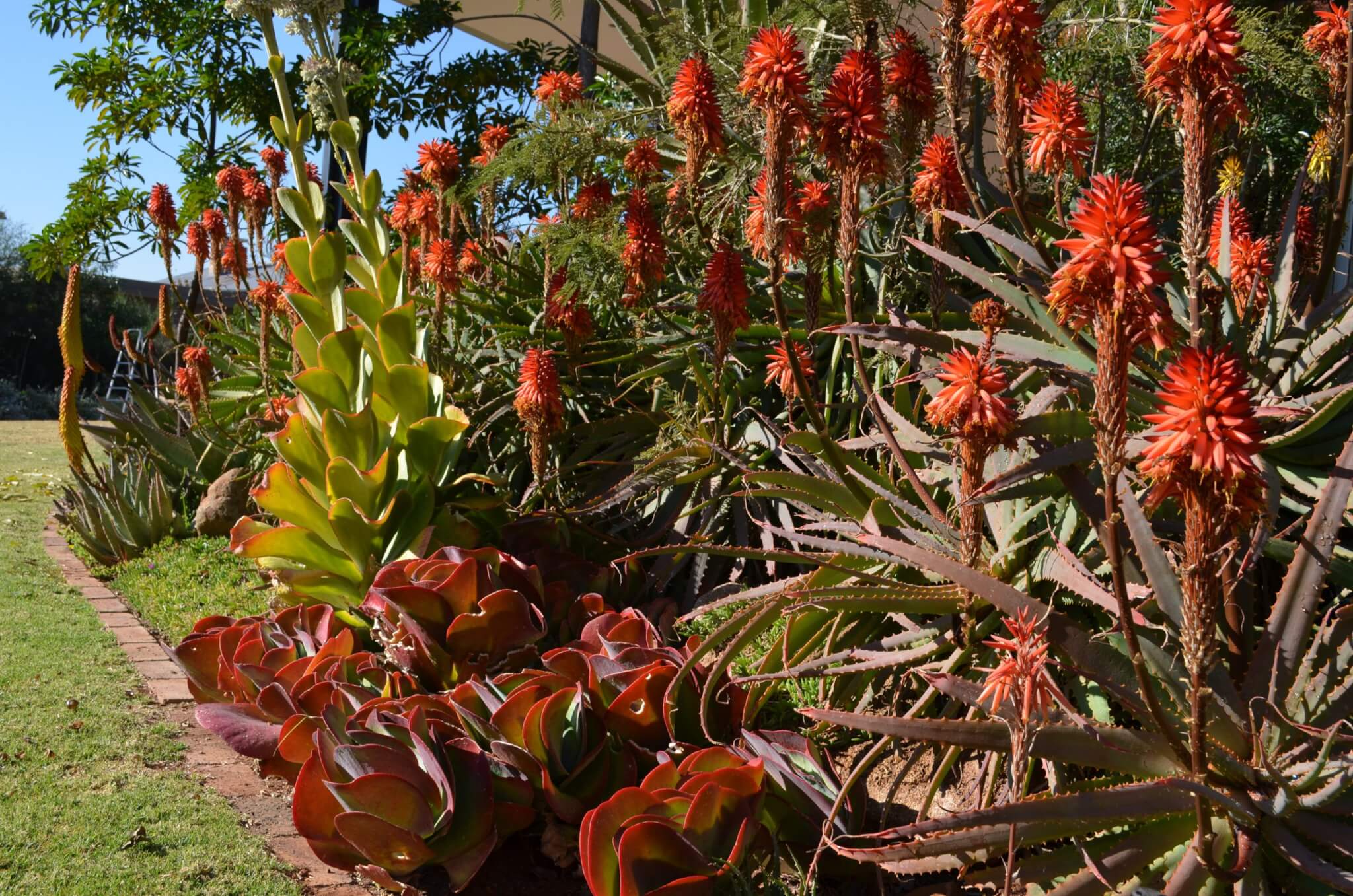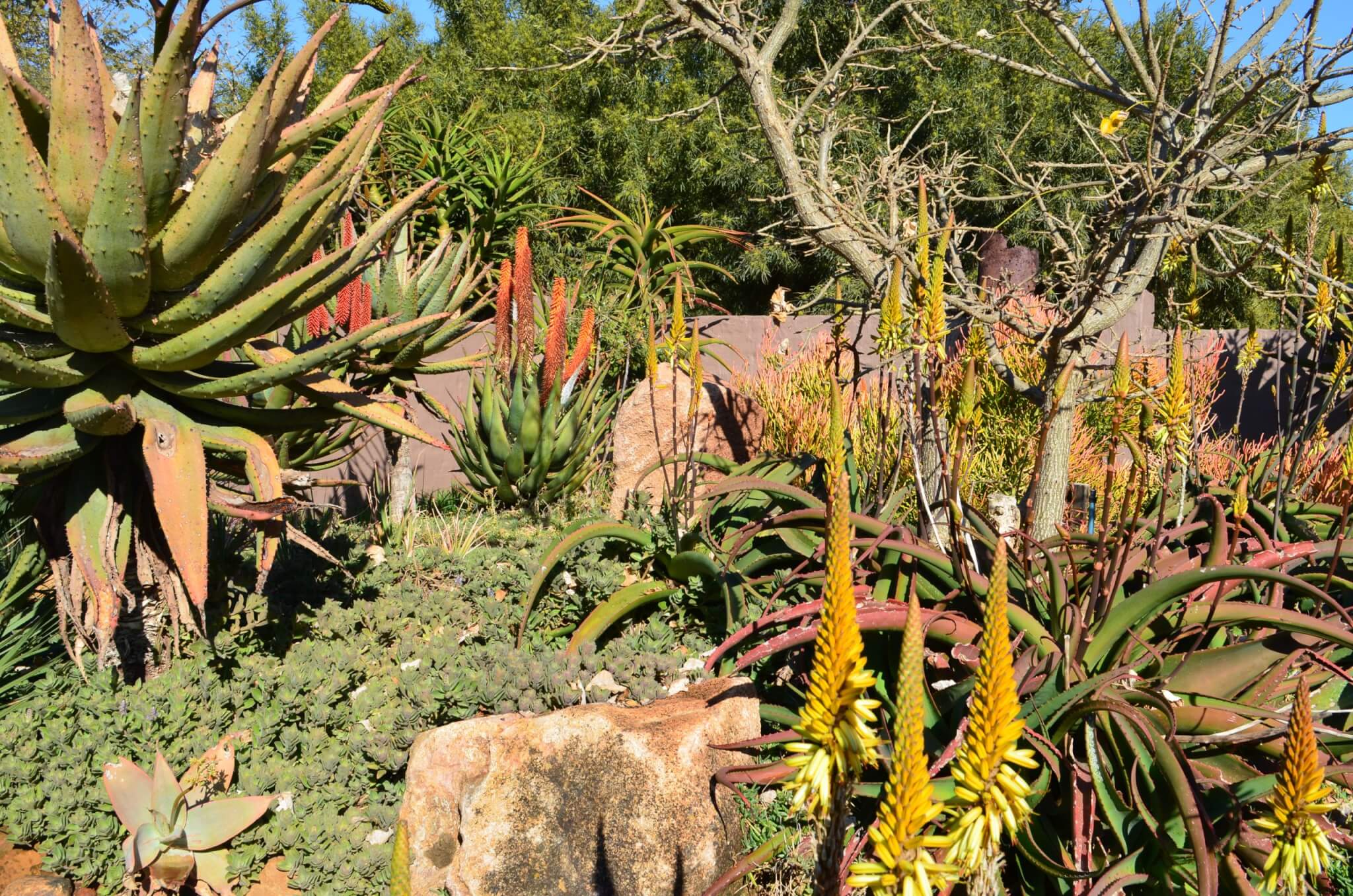Sue and Vladimir’s garden in Midrand was really fun to develop. As it is situated in an indigenous eco-estate, we decided to create an indigenous aloe and Bushveld garden that would thrive in the Highveld climate Because the Highveld landscape is naturally flat, we mounded up the earth in certain areas and introduced boulders characteristic of a Bushveld setting. To enhance these, we planted in groups as many species of aloe that would happily grow in this climate. These random boulders serve to link the aloe areas to the Bushveld areas, and a few old logs provide habitats for small creatures. The soil was then covered with a variety of large, brown pebbles and broken sandstone of differing sizes. Succulent ground covers were chosen to add interest and bring seasonal colour, as well as to soften the hard appearance of the rocks. The entrance now needed to be linked to the other side of the garden and, as the house has a completely glass midsection, I decided to link the wooden floors inside with a deck step at the front door, and a patio of decking built into a stinkwood forest on the other side. By linking the wooden flooring indoors with the decking outdoors, an effect of bringing the outdoors in is created. The main garden had existing stinkwood trees and Anthericum sandersonia on one side of the house, and lawn everywhere else. Much of it was in disrepair, but with several loads of compost and much deep digging, we managed to revive the plants. We introduced a few evergreen trees to soften the winter experience. The garden has at least 50 species of indigenous trees, which were selected for their seasonal changes and the production of fruit and flowers that will attract birds and butterflies. The main lawn was left in the middle and a free flowing bed was created alongside the boundary walls to provide space for screening plants. The lawn is kikuyu, and a defined line of brick on its edges minimises its encroachment into the garden beds. Three black pots were positioned on the other side of the garden to serve as a structural element in a very unstructured garden. After the second year Sue asked us to add a pond for the birds and fish, this done completed the environment for the ecosystem that feed a large variety of wild life. The winters in this area are harsh and some trees needed covering in the first winter. This was successful and they all survived the cold, however three trees and many small shrubs were lost to termites, which literally chewed them overnight. Poison was put down to keep the other plants alive and after two applications, we managed to discourage them. The deck was also treated as a preventative measure. A twice yearly feed with an organic fertiliser and an irrigation system to assist during the dry seasons resulted in amazing growth in the first year, with shrubs and trees doubling in size. Indeed, this garden in its first year has already changed the experience of living in this home. By Juanita Knox Landscape Designer and TV presenter on 'Homegrown'
|
| ||||||||||||||||||||||||||||||||||





